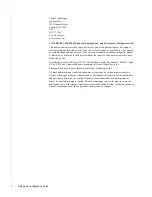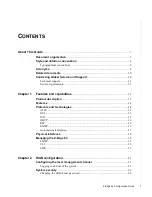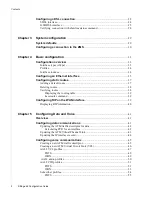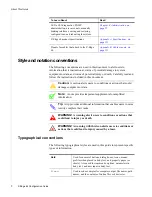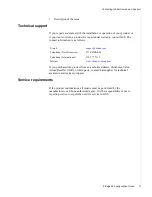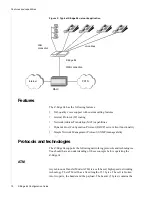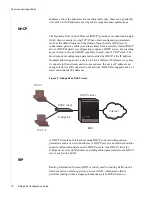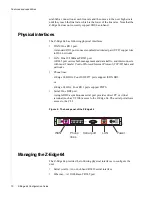
Protocols and technologies
Z-Edge 64 Configuration Guide
15
addressing information, and the payload (48 bytes) carries the voice or data
message. Since each ATM cell has its own addressing mechanism, the cells
can be sent asynchronously, or in any order.
ATM uses virtual channels (VCs) and virtual paths (VPs) to route cells in an
ATM network. A VC, identified by a virtual channel identifier (VCI) is a
connection between two communicating ATM entities. A VC consists of a
concatenation of one or more ATM links. A VC provides a certain quality of
service, which is defined in the ATM Traffic Descriptor. A VP, identified by a
virtual path identifier (VPI), is a group of VCs between two ATM endpoints.
A physical link can support many VPs. Similarly, a VP can contain many
VCs.
DSL
Digital Subscriber Line (DSL) technologies provide access to high-bandwidth
networks over a unshielded twisted pair (UTP) of copper wires. By using
frequencies above the telephone bandwidth (300Hz to 3,200Hz), DSL can
encode more data to achieve higher data rates than would otherwise be
possible in the restricted frequency range of a POTS network. The DSL
family includes several variations.
Symmetric Digital Subscriber Line (SDSL) provides data-only symmetric
transfer rates of up to 2.32Mbps over a single pair of copper wires. SDSL uses
the same 2B + 1Q signaling as ISDN. SDSL service requires that the customer
is no further than 10,000 feet from the central office. SDSL is defined in ITU
G.991.1.
Global Symmetric High-bit-rate Digital Subscriber Line (G.SHDSL) is
designed to operate with both HDSL and SDSL networks. G.SHDSL extends
the reach and transfer rates of DSL services. G.SHDSL supports adaptive data
transfer rates of 192Kbps to 2.3Mbps with a reach of over 20,000 feet. The
G.SHDSL specification (ITU standard G.991.2) allows for transmission over
single-pair and two-pair copper wires.
NAT
Network Address Translation (NAT) is an Internet standard that enables a
local area network (LAN) to use one set of IP addresses for internal traffic and
a second set of addresses for external traffic. Hosts in a private network can
transparently access an external network and enable access to selective local
hosts from the outside.
A NAT device connecting the public Internet and the network it serves
rewrites IP addresses and port numbers in IP headers. The packets appear to
be coming from a single public IP address of the NAT device, instead of the
actual source or destination.
NAT serves two main purposes: It provides a type of firewall by hiding
internal IP addresses, and it enables a company to define more internal IP


